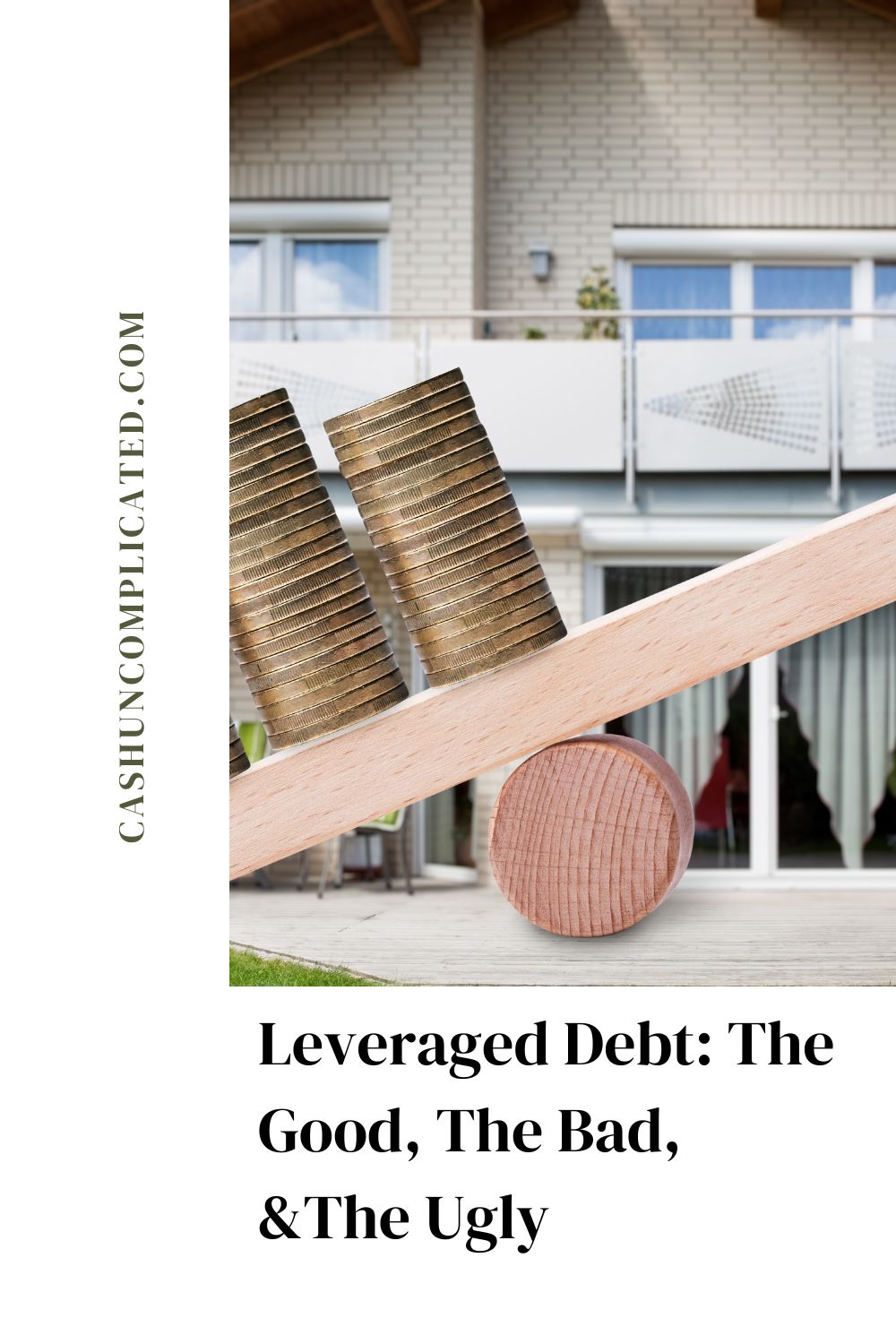I read the book Rich Dad Poor Dad for the first time about ten years ago. Since that time, I’ve re-read the book at least a few times. Each time I’ve read it I’ve picked up something new. Definitely one of my top books of all time.
When I first read the book though, there was a line in the book that I kind of scoffed at. Robert Kiyosaki wrote that the rich don’t work for money. Ha! I thought, what’s that supposed to mean anyway? The Rich don’t work for money?
It wasn’t until I finished the book that I began to understand what the rich don’t work for money really meant. Since that time, I’ve really began to understand what that means and how we all can benefit from that one single line in a book written almost 25 years ago.
The way I look at that line in the book isn’t that the rich have never worked a day in their lives. Or had everything handed to them. It’s that they work in a different way. They create systems and infrastructure that are designed to build long term wealth.
This can look a variety of ways. There are some who create and design big businesses and hire thousands of people to work for them. It can also be as simple as someone who worked hard at a job for several years and then let compound interest in their investment account do the heavy lifting. There are myriad ways to not have to work for money. Here are a few fictional examples.
Real Estate
Jerry is 44 years old and no longer has to work for money if he chooses not to. A couple years after college Jerry scrapped up just enough money for a down payment on a small three-bedroom, two bath house. It was hardly Jerry’s dream home or location—the house was kind of a fixer actually. It was also in a neighborhood about 10 miles from downtown where most of Jerry’s friends lived at the time.
For the first two to three months of owning the home, Jerry spent a couple hours every weeknight fixing up the house. Painting, sanding the floors, cleaning up the backyard, and more. On the weekends he got help from a couple skilled friends to do some of the bigger things like install new kitchen cabinets and do a light remodel of both bathrooms. He also hired out a few jobs that were too far past his skill level.
The Rich Don’t Work for Money: Compounding Results
It felt like those first few months were all work and no play, which they kind of were. But by the end of the summer, Jerry had a much improved house from what he originally bought. A couple of his friends who hadn’t seen the house in a couple months even asked if he bought another house. They were super impressed by the work he did on the inside along with the new grass and shrubs in the yard.
After Jerry completed the work, he put an ad out in the newspaper (yeah, that’s how people used to rent houses back in the day) for two roommates. After a week he had one room filled, and three weeks later the other available room was filled.
The guys that moved in turned out to be really nice guys that Jerry got along well with. They weren’t best friends or anything, but they’d hang out from time to time and keep the house clean. The combined rent they paid actually covered almost 90 percent of Jerry’s mortgage. That left Jerry having to pay very little out of pocket for housing. Which allowed Jerry to save the difference for his next house.
A year and a half later Jerry bought another house, this time a little closer to downtown. The house was originally a two-bedroom, two bath but it had good square footage where Jerry was able to create a third bedroom by splitting up the very large master bedroom into two rooms. This house was in better condition than his first house, so he didn’t have quite the same amount of work.
There was some landscaping he had to clean up, and he added new flooring to the living area. That, along with splitting up the oversized bedroom into two bedrooms was pretty much it. After about a month Jerry again put an ad in the newspaper looking for two roommates. Within three weeks both rooms were filled, plus he added one more person to his original house since he wasn’t living there anymore.
Related:
Inflation and Investing–What Should You Do?
An Improved Portfolio
Jerry now had a total of two houses and five tenants. Two roommates in his new house and three people in his old house. The original house was now making Jerry $300 per month in cashflow and the mortgage on his new house was almost completely covered from the rent of his two roommates.
In addition to his real estate wins, Jerry got a promotion at work and made about 25 percent more than when he first started. With his rents and wage increase at work, Jerry was investing a substantial amount of money each month towards his next purchase.
Jerry repeated this process of buying a house, living in it with roommates, and moving on to the next one three more times. By the time he was 31 years old, Jerry had five houses and very good cashflow coming in every month. He was getting a little tired of roommates at this point so he decided to buy a small place close to downtown for himself. He lived there for a few years before moving to another area of his town with his girlfriend at the time, and now wife.
The next few years Jerry continued to buy real estate, he just didn’t fix it up and live in it anymore. He ventured out into mostly duplexes and triplexes, with a few single family homes mixed in. Jerry didn’t consider himself to be a big time real estate investor because he was only purchasing a couple properties a year, but the results really added up.
Book Recommendation: The Compound Effect
Jerry now has over 25 properties and the monthly cashflow is actually double what he makes in his career. He keeps working because he enjoys it, but the cashflow from his rental properties easily covers all of his family’s expenses. Jerry no longer has to work for money if he so chooses. Although Jerry doesn’t personally consider himself to be “rich” because he lives a modest life, most people would consider him to be quite wealthy.
Index Funds
Denise got a higher paying job than most people straight out of college. She did very well in school and graduated in the top five percent of her class. This opened up more doors for her and allowed her to choose between a few different employers and negotiate her starting salary.
While most of her friends were starting around $45,000 per year out of school, Denise started at $68,000 with the opportunity for quarterly and yearly bonuses. Already financially savvy in her early 20’s, Denise decided to maintain her college lifestyle of living with roommates, keeping her old furniture, and driving the same reliable car she’s had since two summers ago.
Denise witnessed many of her friends making a lot less than her rent expensive apartments and buy new cars. She understood why they did that, but it wasn’t for her. Denise really valued investing and wanted her money to compound. Her parents had always told her that the faster she began to allow money to compound, the easier her financial life would be later on.
An Intentional Mindset
With her intentional financial mindset, Denise invested a significant portion of her income right from the start. Not only that, but she continued to invest all of her pay increases for the next several years. To this day, she continues to invest a good amount of money even though compounding has really taken hold.
In her first year out of college, Denise invested $12,000. She still had plenty left over for food, living expenses, and entertainment. She never felt like she was missing out on anything. College was one of the best times of her life and she was fine continuing that lifestyle even a few years out of college.
In year two, she increased her investment contributions to $13,000. And for the next 10 years she continued to invest about $1,000 more per year. By year 10 of her career, she was investing a very nice sum of $22,000 per year.
Her career really exploded after that. She landed a new job that almost doubled her salary. That allowed her to boost her investment contributions to $40,000 per year. She continued to increase her investments by $1,000 per year until she was 40 years old.
Denise understands she could have contributed more with the pay increase, but she wanted to spend more on housing and entertainment. She had solid reasoning behind it—she never stopped paying herself first and investing a sizable percentage of her income. Denise felt like she was doing it all, and she was.
Here’s a summary of how Denise’s investments have performed.
| Yearly Contributions | Ending Yearly Amount | Yearly Interest Earned | |
| Age 22 | $12,000 | $12,670 | $670 |
| Age 23 | $13,000 | $27,719 | $2,053 |
| Age 24 | $14,000 | $45,408 | $3,685 |
| Age 25 | $15,000 | $66,001 | $5,593 |
| Age 26 | $16,000 | $89,802 | $7,805 |
| Age 27 | $17,000 | $117,159 | $10,353 |
| Age 28 | $18,000 | $148,433 | $13,274 |
| Age 29 | $19,000 | $184,033 | $16,604 |
| Age 30 | $20,000 | $224,425 | $20,388 |
| Age 31 | $21,000 | $270,098 | $24,673 |
*10 percent return on investment
| Yearly Contributions | Ending Yearly Amount | Yearly Interest Earned | |
| Age 32 (New Job) | $40,000 | $340,611 | $30,517 |
| Age 33 | $41,000 | $419,572 | $37,957 |
| Age 34 | $42,000 | $507,853 | $46,281 (first year that interest has passed her contributions!) |
| Age 35 | $43,000 | $606,429 | $55,580 |
| Age 36 | $44,000 | $716,392 | $65,959 |
| Age 37 | $45,000 | $838,921 | $77,529 |
| Age 38 | $46,000 | $975,332 | $90,415 |
| Age 39 | $47,000 | $1,127,092 | $104,756 |
| Age 40 | $48,000 | $1,295,794 | $120,702 |
*10 percent return on investment
In the beginning, Denise’s money grew slowly. In her 30’s she continued to contribute, but compound interest was doing most of the earning by that point. At age 34, compound interest outperformed her contributions. As Denise enters her 40’s and 50’s, compound interest will be doing almost all of the work.
Even if she contributes nothing the next 20 years, her money will continue to massively compound. If Denise were to contribute literally nothing over the next 20 years, this is what her investments are projected to look like at the ages of 45, 50, 55, and 60.
| Yearly Contributions | Ending Yearly Amount | Interest Earned Over 5 Year Period | |
| Age 45 | $0 | $2,131,981 | $836,187 |
| Age 50 | $0 | $3,507,767 | $1,375,786 |
| Age 55 | $0 | $5,771,360 | $2,263,593 |
| Age 60 | $0 | $9,495,670 | $3,724,310 |
*10 percent return on investment
In this graphic, Denise is rapidly growing her money without contributing anything. She could even withdraw money and her investments would continue to compound. Denise has myriad options as she enters her 40’s—she can continue to work and contribute to her investments, continue to work and contribute nothing to her investments, not work and pull from her investments, take a year off, retire, and much more.
She does not need to work to make money at this point assuming a reasonable withdrawal rate. Compound interest is doing the majority of her earnings once she has reached this point in her financial journey.
Starting a Business
Janice worked a few years after college in a traditional nine to five job. She liked the job ok but decided that by her 25th birthday, she was going to start a business of her own. Janice felt like she had the experience, grit, and drive to do it.
She also found really good mentors after college that guided her on what she needed to do to be successful. That, combined with her love of reading business books and studying successful business owners, put her in a good position to go out on her own.
The first couple years of starting her business were a little rough for Janice. She struggled to turn a profit for the first year and a half and was living off the money she had saved while working. She sometimes wondered if it was worth it. Despite some times of questioning herself, Janice ultimately pushed through and began turning a profit before the business hit the two-year mark.
After three years she hired her first employee, and by year four she hired two more employees. It seemed like the years were flying by. By year 10, all of her hard work and perseverance was beginning to show. She went from a small company with only a few people working for her to over 50 employees and a management team that ran things efficiently even when Janice was on vacation.
Time Away From the Business
Janice made efforts to take more time away from the business. She started by going on vacation a week at a time, expanded that to two weeks, then tried a month. At that point she noticed things ran just as smoothly without her as when she was there. She then upped the ante to take three months away, and had the same result. Janice was confident that she had created the infrastructure in the company to have it run successfully no matter whether she was there or not.
Janice now had several options. She could continue to work in the company she founded on a day to day basis, work part time, take several months off at a time, sell the business, and more. Whether she worked or not was up to her. The money would be coming in whatever option she chose.
The Rich Don’t Work for Money
Back to the title of this post that the rich don’t work for money. In all three examples, Jerry, Denise, and Janice no longer need to work for money. They can choose to, but they don’t have to. All three people used to work for money (and they worked very hard), but now they don’t need to.
All three people set up the infrastructure to allow their money to grow so significantly that day to day work was no longer mandatory. Each person got rich using a different method, but they all achieved the same result of not having to work for money.
When Robert Kiyosaki wrote in Rich Dad Poor Dad that the rich don’t work for money, I don’t think he meant that they have never worked for money. He’s simply saying that the rich find ways to get their money to work for them. The good news is that we can all follow this principle and build wealth. Not everyone is going to create massive fortunes and become “one percenters”, but we all can certainly accumulate wealth following this principle.
There are endless ways to have your money work for you, this post just addresses three different ways as examples. Starting a successful business or company certainly speeds up the wealth-building process, but it’s not mandatory. Anyone who works a traditional nine to five job and consistently invests their money can also achieve great wealth.
What do you think of the idea that the rich don’t work for money?











